
Symptoms
Fractures
The athlete will feel immediate pain with swelling and bruising which will appear quite quickly.It will be painful to try and move the finger which may appear deformed if the bone is displaced or joint dislocated.If there is any nerve damage, the finger may be numb or feel tingly.
Dislocations
Symptoms include immediate pain with an obvious deformity of the finger. The patient will have great difficulty trying to move the finger. It is likely to swell up quickly and bruising may appear later. It there is any nerve damage then the dislocated finger may feel numb or tingly. Damage to blood vessels could result in the skin feeling cold and appear pale.
Tendon & Ligament Damage
Swelling is likely to develop over the joint and there will be restricted movement in the finger. Later on, pain is likely to be more specific when bending the finger If there is a severe or a complete rupture of the ligament then the joint will be unstable.
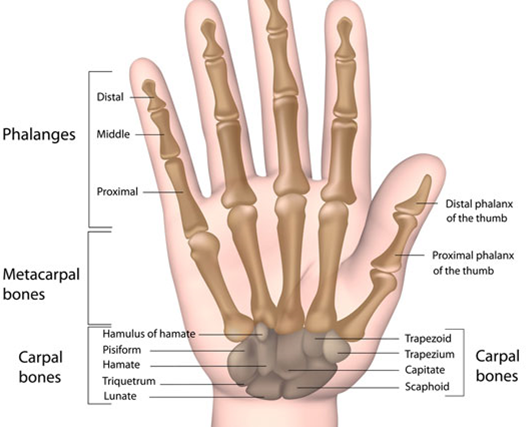
Fractures
Metacarpal Fracture
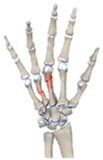
The metacarpal bones are the five long bones in the hand. Any of these bones can be broken or fractured. It is the first metacarpal under the base of the thumb which is the most commonly injured
Boxer's Fracture
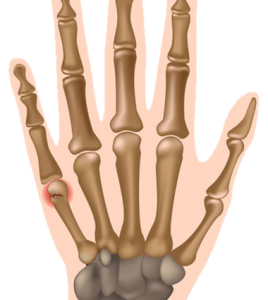
A Boxer’s fracture is a break to either the 4th or the 5th Metacarpals. As the name indicates, this injury is usually caused by punching something hard
Thumb Fracture
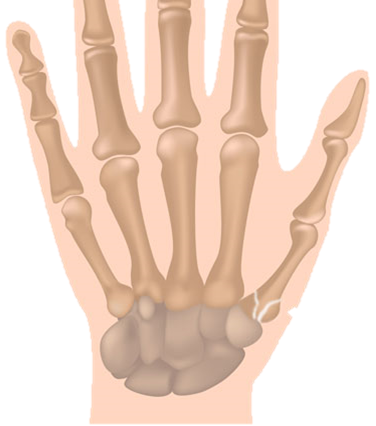
A broken thumb is either a fracture of small bones called phalanges, or a fracture at the base of the thumb. These specific thumb fractures are called a Bennett fracture and a Rolando fracture.
Phalange Fracture
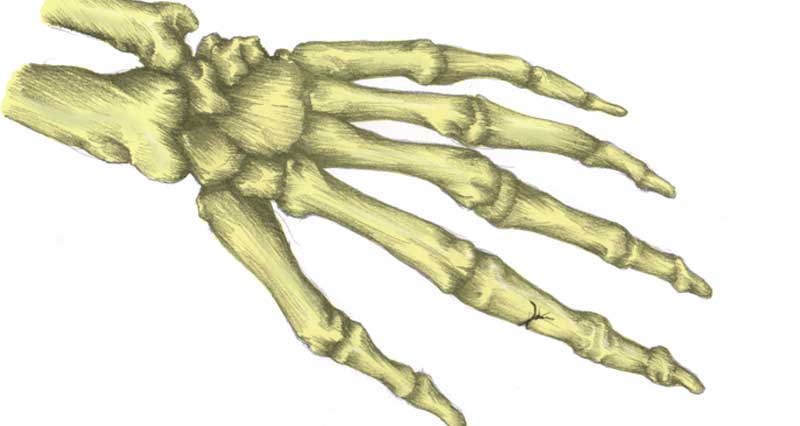
A broken finger is a break or fracture in any one of the 3 small phalange bones which make up each finger. It will usually be the result of some kind of impact or collision.
Tendon & Ligament Damage
Injuries to the hand and fingers are common in sports and must be taken seriously.
Sprained Finger or Thumb
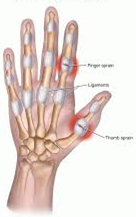
Like any other joint in the body the finger joints have ligaments to help support & avoid excess movement. If the finger or thumb is bent out of normal range of movement the ligament can tear or stretch.
Mallet Finger
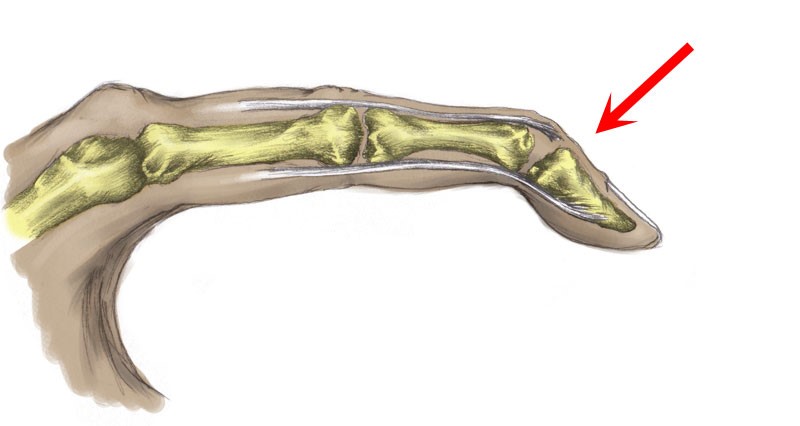
Mallet finger occurs most frequently from a ball, for example, a basketball striking the fingertip. The impact forces your finger to bend, at the same time as the extensor muscles try to straighten it. As a result, the tendon can tear.
Jersey Finger
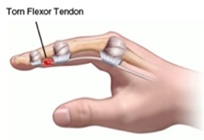
A jersey finger is the opposite to mallet finger and involves the flexor tendons. As the name suggests the most common cause is when a athlele is gripping a shirt at the same time as your finger is being forced straight. An avulsion fracture is common.
Trigger Finger
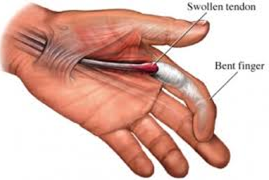
Trigger Finger is a form of tenosynovitis which results in your finger becoming bent in towards the palm of the hand. As the tendon passes through the hand through a rings which hold it in place. When the ring becomes tight and inflamed the tendon cannot pass through it properly.
Volar Plate
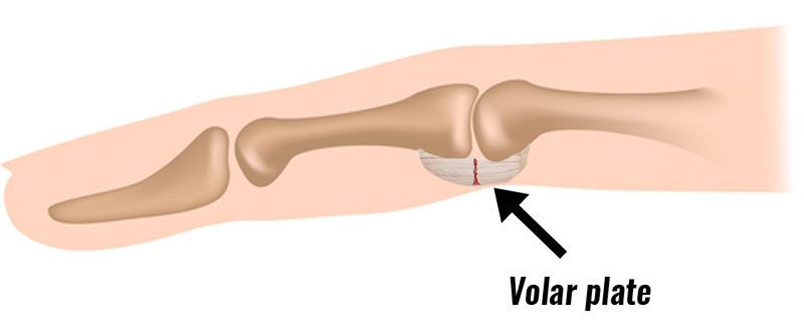
Volar plate is a ligament which sits under the finger and separates the joint space of the 1st Phalange joint. Often caused by hyperextension of the finger. The most common cause of this injury is where the ball forces the fingers backward. An avulsion fracture is common
Dislocations
A finger dislocation can occur in any of the joints in the finger, but occurs most frequently in the middle joint, between the proximal and middle phalanges.
The most common causes of this kind of injury include jamming the fingers between something, such as a door and its frame, or a ball and a bat.
It may also happen from a force on the end of the finger, overextending the joint.
Fractures of the involved bones are common complications.
Treatment
For minor sprains and stable fractures the most common form of treatment is “Buddy Taping”
The aim of this taping is to prevent movement of the injured finger during the healing stage of rehabilitation.Fingers 1 and 2 are usually ‘paired’ for taping and 3 and 4 are usually best taped together.
For injuries involving the tendons, splints are wore with the finger held in a extended position to allow it to heal.
More complicated fractures where the broken fragment is displaced or broken into more than one part, surgery may be required. This usually involves pinning the two fragments together so that they heal in the right place.
Following immobilisation, the finger may feel particularly stiff and weak and so it is important to do mobility and strength exercises to regain full movement and strength. Hand putty and elastic bands exercises are particularly good for this.
Contact Me
Let's chat!
Need more information? Send me an email or drop me a line. I don’t bite!
- Charlotte@rehabontheroad.co.uk
- 07971448719
